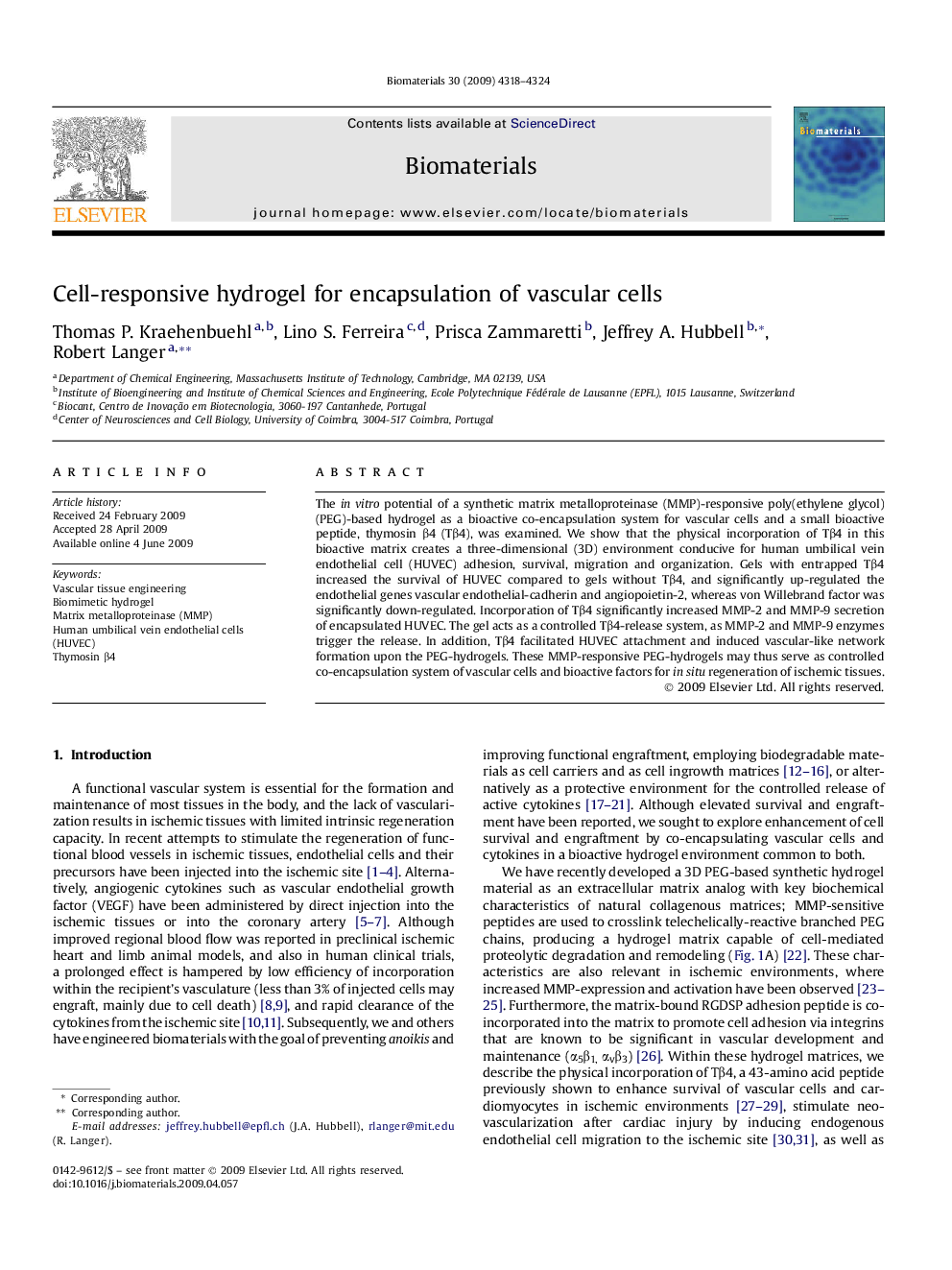| Article ID | Journal | Published Year | Pages | File Type |
|---|---|---|---|---|
| 10230030 | Biomaterials | 2009 | 7 Pages |
Abstract
The in vitro potential of a synthetic matrix metalloproteinase (MMP)-responsive poly(ethylene glycol) (PEG)-based hydrogel as a bioactive co-encapsulation system for vascular cells and a small bioactive peptide, thymosin β4 (Tβ4), was examined. We show that the physical incorporation of Tβ4 in this bioactive matrix creates a three-dimensional (3D) environment conducive for human umbilical vein endothelial cell (HUVEC) adhesion, survival, migration and organization. Gels with entrapped Tβ4 increased the survival of HUVEC compared to gels without Tβ4, and significantly up-regulated the endothelial genes vascular endothelial-cadherin and angiopoietin-2, whereas von Willebrand factor was significantly down-regulated. Incorporation of Tβ4 significantly increased MMP-2 and MMP-9 secretion of encapsulated HUVEC. The gel acts as a controlled Tβ4-release system, as MMP-2 and MMP-9 enzymes trigger the release. In addition, Tβ4 facilitated HUVEC attachment and induced vascular-like network formation upon the PEG-hydrogels. These MMP-responsive PEG-hydrogels may thus serve as controlled co-encapsulation system of vascular cells and bioactive factors for in situ regeneration of ischemic tissues.
Keywords
Related Topics
Physical Sciences and Engineering
Chemical Engineering
Bioengineering
Authors
Thomas P. Kraehenbuehl, Lino S. Ferreira, Prisca Zammaretti, Jeffrey A. Hubbell, Robert Langer,
